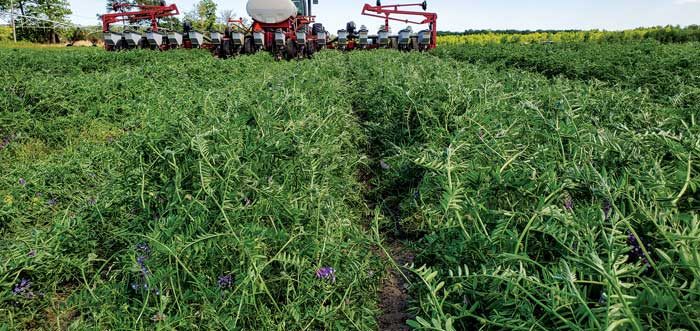No-Till Farmer
Get full access NOW to the most comprehensive, powerful and easy-to-use online resource for no-tillage practices. Just one good idea will pay for your subscription hundreds of times over.

PLANTING GREEN. Jay Baxter tries to let hairy vetch grow as long as he can, preferring to wait to terminate until early May, to get as much nitrogen (N) production as possible. Doing this allows him to credit 80-90 units of N to the vetch.
There’s a saying in Delaware that the state is always 10 days away from a drought.
“We could have 3 inches of rain today, and it’d be gone in 7 days,” Jay Baxter says.
Irrigation has thus long been part of the fourth-generation farmer’s operation in Georgetown. The farm has 37 pivots on 2,000-plus acres of corn, sweet corn, soybeans and baby lima beans.
When Baxter and his family had the opportunity to receive treated wastewater in the mid 1990s as an irrigation source from a local municipality, they jumped at it. The only caveat is that when the municipality sent water in the winter, it couldn’t be applied to fallow ground. So the farm began seeding bin-run wheat as a cover crop.
Baxter was wrapping up his time in college when this began. When he returned in 2002, he knew he wanted a different cover crop species that would bring more value to the operation.
“The wheat was just something we were using to check that box,” he recalls. “I asked what can I plant that will actually return something back to me that I can use?”
After consulting with other farmers, he tried hairy vetch.
Hairy vetch initially caught Baxter’s attention because of its nitrogen (N)-producing potential. So in the fall of 2004, he seeded his first hairy vetch cover crop.
It did not disappoint. In that very first year, he was told that based on the amount of growth it achieved, he could earn a…